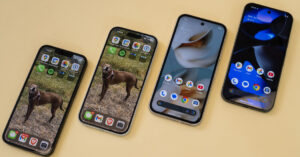How Do the iPhone 16E and Google Pixel 9A Compare to More Expensive Models?
With tariffs threatening to drive up the costs of most things, the new entry-level phones from Apple and Google present a timely opportunity to save some bucks.
With all the talk about tariffs driving up costs, the word “cheaper” should bring comfort to just about anyone. That’s why I’m delighted to share that the cheaper smartphone from Google has arrived, a few months after Apple released a somewhat cheaper entry-level iPhone — and that both products are very good.
Google this week released the Pixel 9a, the $500 sibling of its $800 flagship smartphone, the Pixel 9. It competes directly with the $600 iPhone 16e released in February, the cheaper version of Apple’s $800 iPhone 16.
Both of the new phones have the staples that people care most about — great cameras, nice screens, zippy speeds, modern software and long battery life. To cut costs, they omit some fancier extras, like advanced camera features.
Is it a wise idea to save some bucks, or better to spend more on the fancier phones? To find out, I strapped on a fanny pack and carried all four phones with me for the last week to run tests.
The upshot: As is often the case, you get what you pay for. The $800 phones are slightly better in terms of features and performance than the cheaper versions, and the $600 iPhone is faster and has a better camera than the $500 Pixel.
But more important, the cheaper Pixel and iPhone were nearly indistinguishable from their $800 counterparts in several of my tests. In some cases, like battery life, the cheaper phones were even better.






